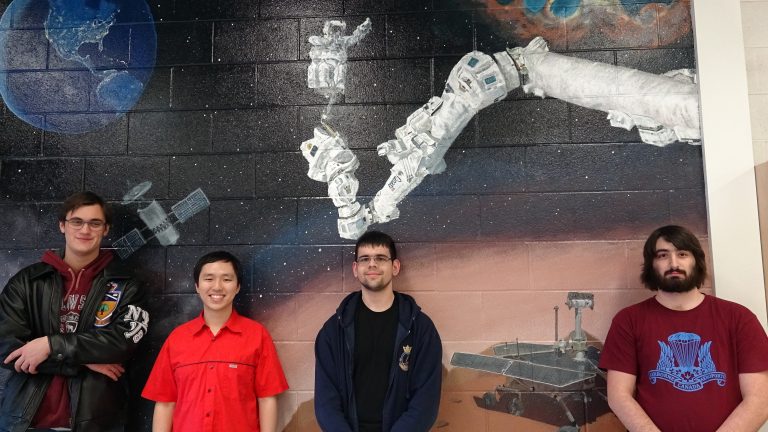Update Aug 1, 2017: Check out the team’s Twitter feed feed for photos and videos from their flight.

Not many of us get to experience what it’s like to float in space. This week several of our students will get to experience the next best thing — a flight on a microgravity aircraft where they will try to unravel a complex physics process.
Collectively known as Team AVAIL (Analyzing Viscosity and Inertia in Liquids), Neell Young (EngSci 1T4 + PEY, MASc Student UTIAS), Caulan Rupke, Michael Lawee and Andrew Ilersich (all Year 4 EngSci) will conduct experiments on a phenomenon known as the “liquid rope coil” effect.
See a video of the effect and learn more about the team’s mission.
Their work will have implications for 3D printing in microgravity during long-term space missions. Here on Earth, it could also help develop 3D printing techniques for new porous materials for use in biomedical engineering.
The team is in Ottawa July 24 – 28 for a flight on the National Research Council’s Falcon 20 aircraft. Read about their mission and follow their progress on Twitter and Youtube.